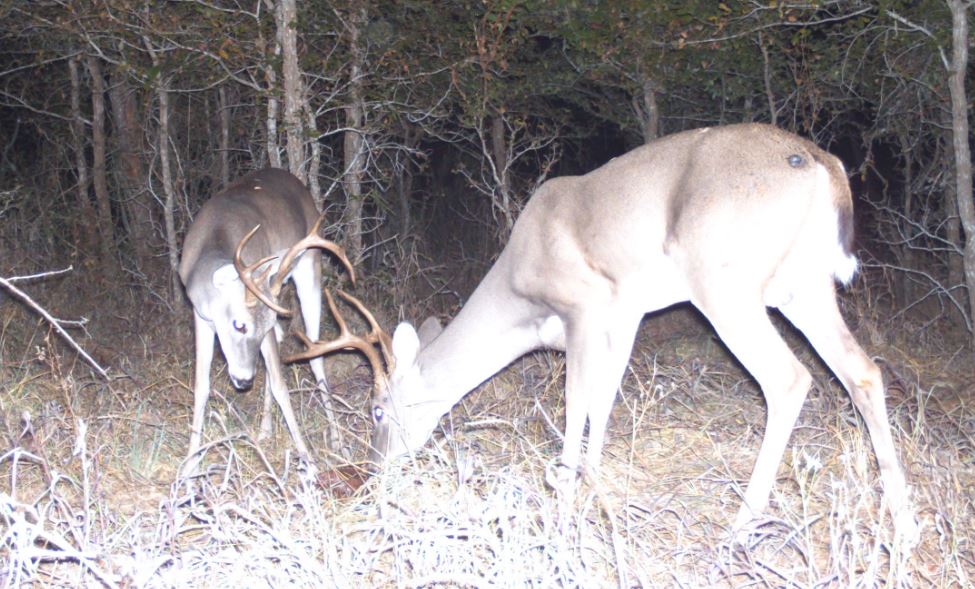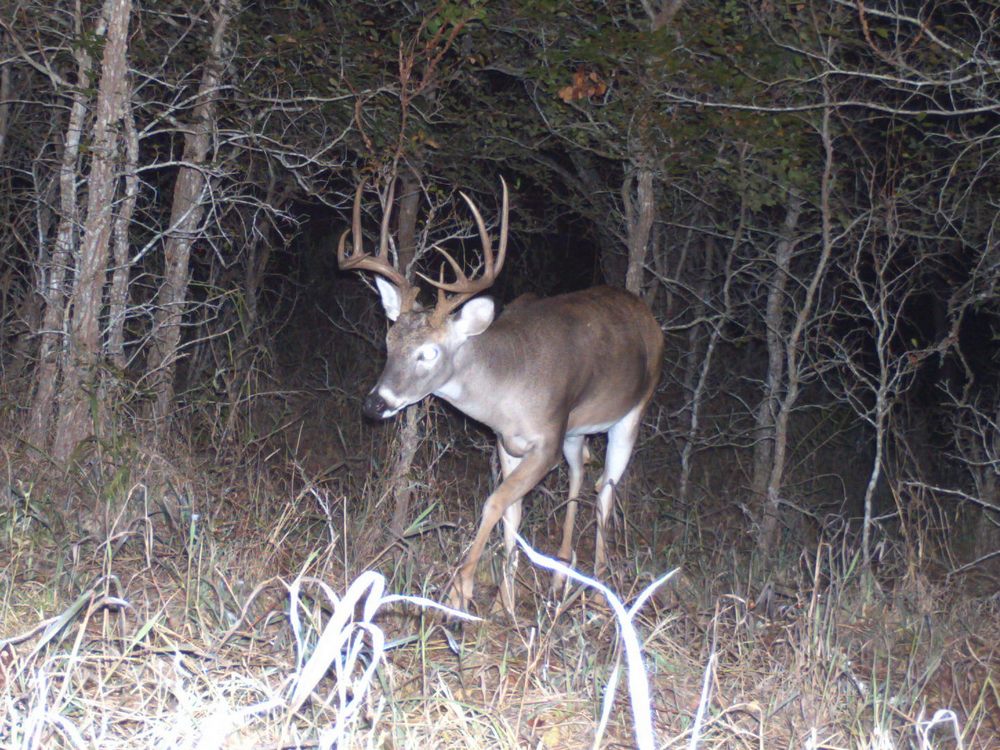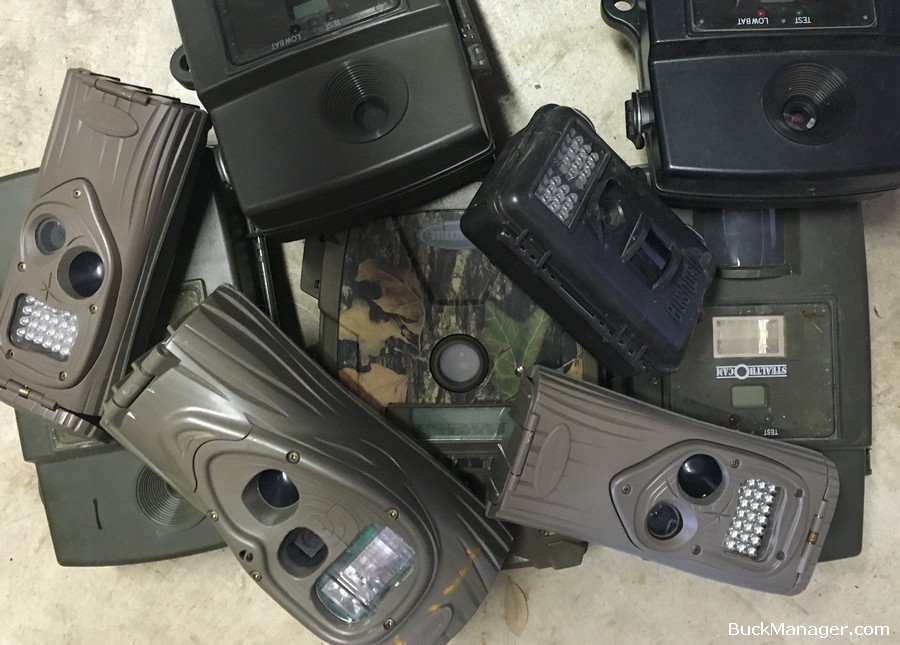Searching for Success
It’s mid-summer, hot as hell and all I can think about is doing some pre-season deer scouting to get ready for hunting season. As the mercury climbs into triple digits I can’t help but think about the cooler weather the latter-half of the year provides, but it’s the deer hunting that the fall and winter offers that really gets me fired up!
We still have months until the first deer hunting season opens so that makes now the perfect time for pre-season deer scouting. After all, at this point in the year there should be a fair amount of antler growth up top on bucks. It’s just a matter of time before growth stops, velvet falls off and then we really get to see what we have a chance of seeing during deer season.
We’ve had a good amount of rainfall throughout the spring and early summer this year in the area I hunt, so I’m expecting great things. It’s time to confirm my suspicions.
Pre-Season Deer
White-tailed deer change physically throughout the year. This is especially true with bucks. Much of this change results because of extreme physical exertion (and associated weight loss) during the rut in the fall, but the big driver in bucks over the course of a year really boils down to testosterone levels. After the rut, bucks go into recovery mode and try to pack that weight back on.
During the spring and summer bucks are not muscled-up like they are just before and during the breeding season. A lot of bucks have the body confirmation of a doe right now, with long, rather thin necks. This will change shortly as the days become shorter, testosterone levels go up and bucks get jacked.
I really enjoy watching the rapid transformation of whitetail bucks as they transform their bodies into their “fighting weight.” It’s like someone hits a switch; the velvet starts coming off and their front-end and neck start bulking up big time. That’s when you know it’s going to be on.
Scouting with Cameras
The go-to scouting method is a game camera — or better yet — as many game cameras as you can get your hands on. As you know, there are a variety of cameras on the market. Most are relatively easy to use but still provide a variety of options for capturing photos of the deer on your property.
I actually use several different brands and camera models. Most of the cameras I use are either Cuddeback and Bushnell. Go with the one or ones that you are comfortable with financially and technically. I say this because some cameras are definitely easier to use, yet even those cameras that are more difficult to setup will still work great in the field. That is, of course, if you have them set right.

Plain and simple, the best time to inventory whitetail bucks is during the summer months. It is during this time of year that bucks of similar ages will be running together in bachelor groups. Get a bachelor group of older bucks on camera and you may see a handful of shooters in relatively short order.
During the pre-season bucks will be in a predictable routine. Most of their time is spent feeding and trying to avoid the heat. The majority of buck movement will start near sunset and run into the night followed by another period of activity that occurs near daybreak and ends by mid-morning, before it gets hot.
Scouting for Hunting Season
Make no mistake, scouting is hunting. The best way to bag a nice buck this deer season is to start hunting now. Let the other guys wait until the last minute to get their hunt in order; the pre-season is a superior time to identify where you do and do not want to focus your time come deer season.
The whitetail bucks that you capture on camera during the summer will still be around come hunting season. They do travel further, expanding their range during the rut, but those bucks do not leave for good. They continue to use their core area before, during and following the rut, because it’s the area where they live. They know this area best.
Pattern them during the pre-season and then tag them during the hunting season.
How to Scout During the Pre-Season
Whitetail bucks are fairly predictable during the summer. They do not move around much. They stay with close proximity to readily-available food sources and water and more or less take it easy; since they are friendly with one another at this time of the year. As we know, things change.
They key to pre-season scouting is keeping a digital-eye on feeding and travel areas. This is where those motion-activated cameras work their magic remotely. Once you identify primary food sources, determine where to place a camera or cameras to monitor the site. No definable food source? Not a problem.

You can create attractive feed sites by introducing supplements. The easiest way to go about doing this is by using some type of deer block. Blocks tend to be quite aromatic so they will attract deer from a distance and they can last quite a while. In addition, they are high in protein and typically taste good to deer, so bucks will return again and again so that you can follow their progress. Other options are hand-thrown baits of your liking or a mineral site.
Deer Season: Time for Tagging
After having identified the bucks on your hunting property the next step is to figure out how to kill him. Most properties have at least somewhat-definable travel corridors that deer use to go from place to place. Many properties have clearly-defined corridors and pinch-points where bucks can be intercepted early in the season.
Pre-season scouting photos will tell you the quantity and quality of bucks using the area, but they will also help pattern an individual buck’s movements. When hunting season is a few weeks out, setup cameras on travel ways leading to and from food sources. A day or two before season, sneak in and collect your photo data. After reviewing the photos leading up to season, you will have identified the best time and place to tag the buck you’re after.
I have used this method for pre-season deer scouting and have found it very useful (successful) on new properties. The technique of identifying and patterning bucks using cameras is deadly when done properly. Remember to stay low-impact when you go in and out to check cameras. If you have a whitetail buck patterned then your best chance of success is the first time you hunt him.
